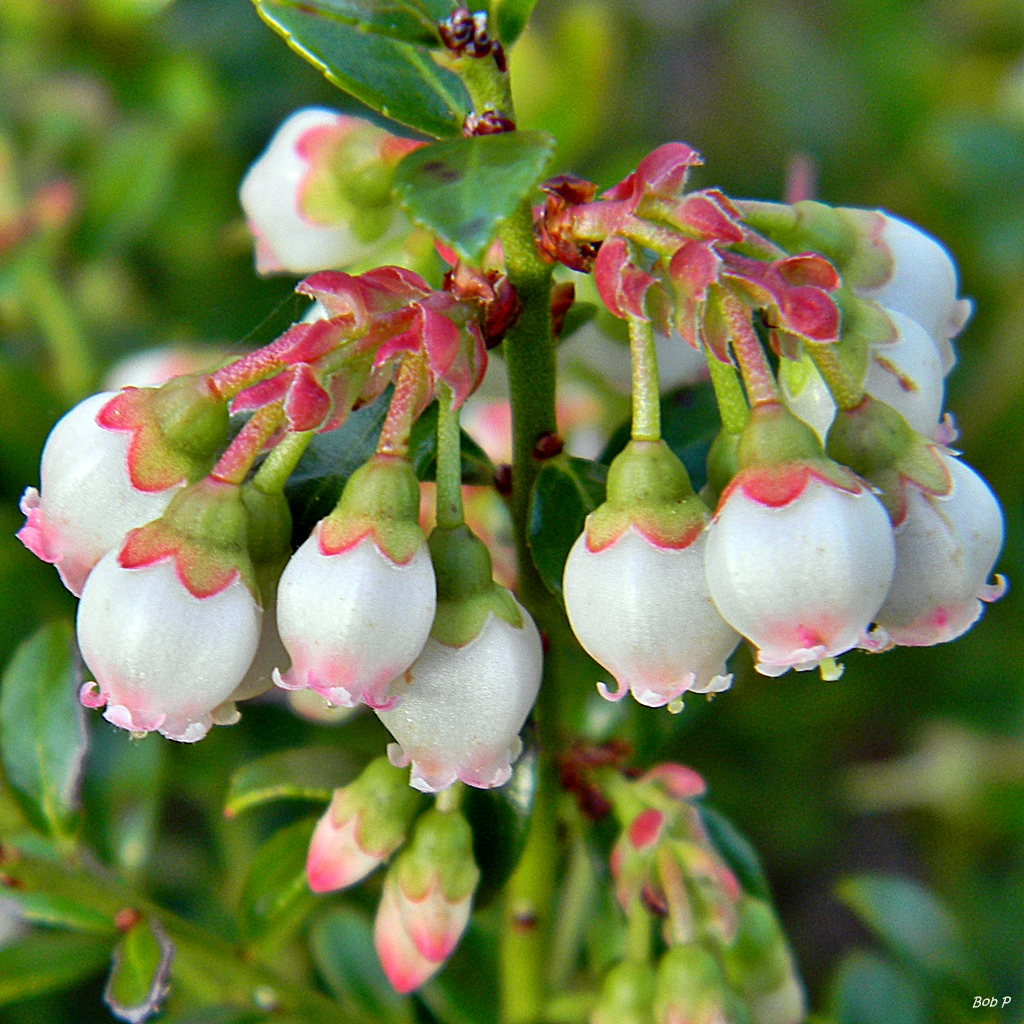Blueberry (Vaccinium corymbosum)
Flower biology
- The flower of blueberry (tall bush = Vaccinium corymbosum, V. ashei, low bush = V. angustifolium, V. myrtilloides) is bell-shaped, hermaphroditic and self-pollinating.
- The flower produces nectar.
- The pistil protrudes just beyond the corolla, so that both self-pollination and cross-pollination can occur. In a number of cases cross-pollination with pollen from another variety produces a better yield.
- Pollen-collecting bumble bees hang on the flower upside down, holding on to it with their legs. They fasten their jaws onto the rim of the bell-shaped corolla and set the flower into vibration by activating their flight muscles (without spreading their wings). This is called buzz pollination. Light discolourations that can be seen on the rim of the bell after a few hours reveal that the flower has been visited by bumble bees.

Introduction schedule
- In outdoor crops 6-9 LARGE colonies per hectare are necessary if no other pollinators are present.
- On delivery, one LARGE colony consists of 80-110 worker bees and has a life expectancy of 4-6 weeks.
- For pollination of blueberry in the greenhouse, LARGE colonies are used: 1 hive covers 750 m². For smaller areas, another type of hive may be suggested by your consultant.
Instructions for use
- Colonies should be introduced when the first flowers are open.
- Colonies should be placed on a sturdy support, about 50 cm above the ground; in spring in a sunny place, and later in the season in the shade.
- Secure the hive so that ants cannot enter it.
- After placement of the hive, let the bumble bees settle down for a while (½ - 1 hour) before opening the flight hole.
- Following their initial orientation flights the bumble bees will immediately start pollinating the crop.
- Bumble bees are active at temperatures between 10 and 30 degrees Celsius. They function best at temperatures between 15 and 25 degrees Celsius.
Crop protection
- Combining the use of bumble bees with natural enemies does not present any problems.
- Agricultural chemicals may have direct or indirect effects on the bumble bees. Direct effects occur when worker bees and larvae die as a result of contact with or digestion of a chemical product, indirect effects occur when the smell of the treated flower puts off the bumble bees, causing visits to stop.
- Systemic pesticides (pesticides that are absorbed through the roots) often have a long-lasting residual effect. If a flower produces nectar in addition to pollen (e.g. sweet pepper), the damage to the bumble bee population may be much more serious than in a crop that only produces pollen (e.g. tomato).
- You will find detailed information about persistence and compatibility of pesticides with bumblebees and most other beneficials in Zonda's Side Effects Guide or online at Koppert’s website: www.koppert.nl
- In all cases the BEEHOME option of the hive must be activated before the crop is treated. This option ensures that bumble bees can enter, but not leave the hive.
- After about an hour the hive can be closed completely, so that it can either be covered or removed from the crop.
- If the hive is temporarily removed from the crop, it should be stored at 18 to 20 degrees Celsius.
Need more help with our product?
Please call us on 0800 496 632